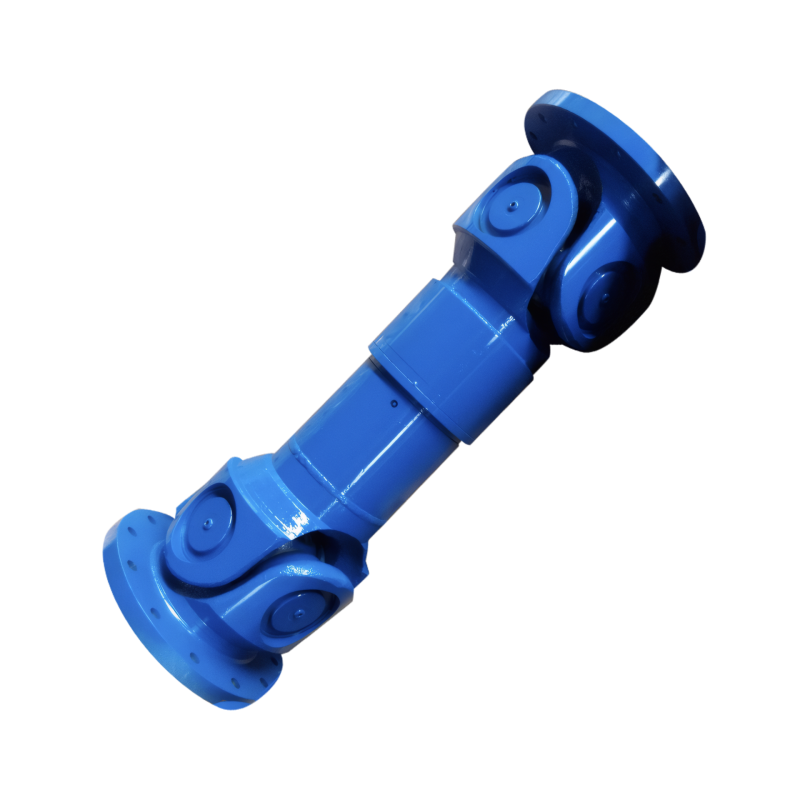The layout of the drive shaft for a four-wheel drive vehicle
Four-Wheel Drive (4WD) Transmission Shaft Layout Principles and Design Characteristics
Basic Layout Forms of 4WD Transmission Shafts
The transmission shaft layout in 4WD vehicles primarily depends on the engine and drivetrain positioning. Common configurations include longitudinal front-engine rear-wheel drive (FR) converted to 4WD, transverse front-engine front-wheel drive (FF) converted to 4WD, and rear-engine rear-wheel drive (RR) converted to 4WD.
Longitudinal FR-based 4WD systems typically add a transfer case to the rear-wheel drivetrain, distributing power to both front and rear axles through additional transmission shafts. This layout maintains rear-wheel drive characteristics while enhancing off-road capability.
Transverse FF-based 4WD systems require a right-angle gear set to redirect power from the transverse engine to the rear axle. This design often involves compact packaging challenges but enables efficient space utilization in compact vehicles.
RR-based 4WD systems, exemplified by certain sports cars, distribute power forward through a transmission shaft connected to a front differential. This configuration balances weight distribution but requires careful handling of drivetrain angles.
Structural Design Requirements for Transmission Shafts
4WD transmission shafts must accommodate multi-angle operation and dynamic load changes. During vehicle movement, the angles between connected components continuously vary, requiring the transmission shaft to maintain stable power transmission while preventing resonance within the operating speed range.
The design typically incorporates universal joints or constant-velocity joints at connection points. Universal joints allow angular movement between shafts, while constant-velocity joints ensure consistent rotational speed regardless of operating angle. For example, Rzeppa-type constant-velocity joints are commonly used in front-wheel drive applications for their ability to maintain equal speed during steering maneuvers.
Material selection focuses on high-strength alloys capable of withstanding torsional stresses and fatigue. Some designs employ hollow shafts to reduce weight while maintaining rigidity, particularly in performance-oriented applications.
Angle Management and Dynamic Adjustment
Effective angle management between transmission shaft components proves crucial for system longevity. Excessive angles accelerate wear and reduce efficiency. In longitudinal FR-based 4WD systems, the rear driveshaft angle typically remains below 3° during normal operation, with maximum angles not exceeding 7° to prevent vibration issues.
Some advanced 4WD systems incorporate adjustable-length transmission shafts to compensate for suspension movement. These designs use sliding splines or telescoping sections to maintain proper alignment and tension under varying load conditions. This feature proves particularly beneficial in off-road vehicles experiencing significant suspension articulation.
The integration of electronic control systems further optimizes transmission shaft performance. Modern 4WD vehicles employ sensors to monitor drivetrain angles and adjust torque distribution accordingly, reducing stress on transmission shaft components and improving overall system reliability.
 Customized design of drive shafts for special vehicles
Customized design of drive shafts for special vehicles
 The durability of the drive shaft for off-road vehicles
The durability of the drive shaft for off-road vehicles
 Introduction to the structural strength of truck drive shaft
Introduction to the structural strength of truck drive shaft
 The layout of the drive shaft for a four-wheel drive vehicle
The layout of the drive shaft for a four-wheel drive vehicle
 简体中文
简体中文 English
English
